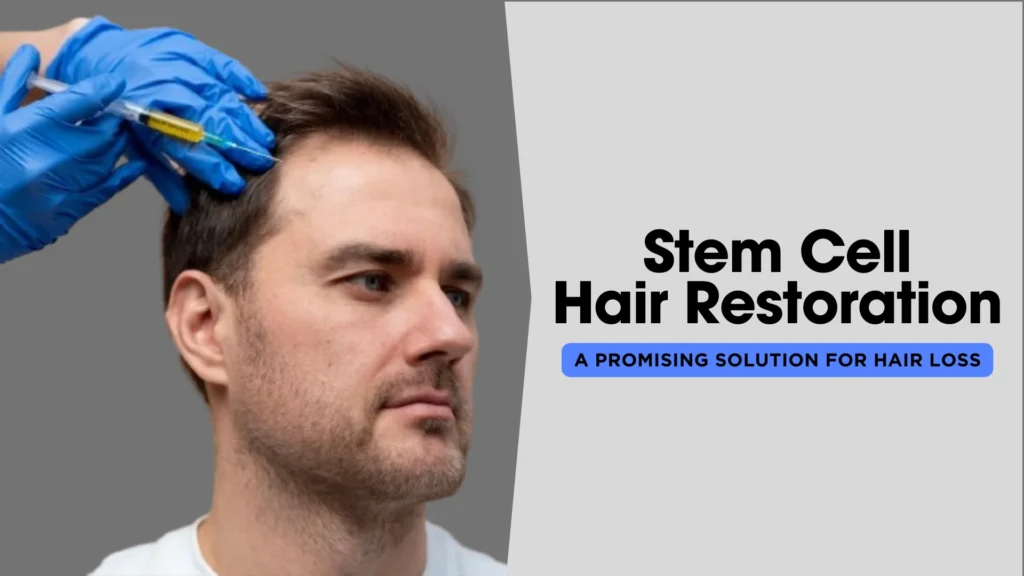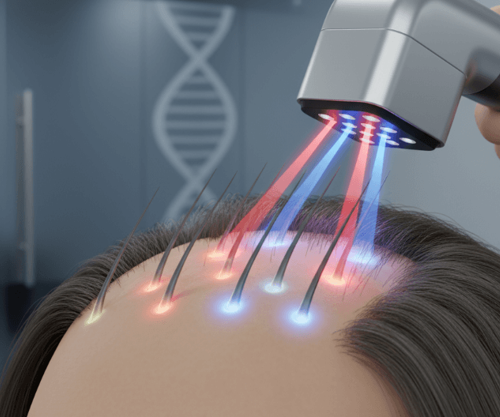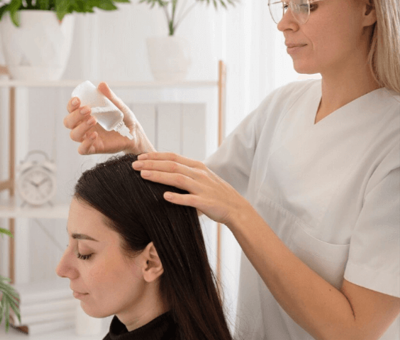Alopecia areata is an autoimmune condition characterized by sudden, patchy hair loss, where the immune system mistakenly attacks hair follicles. For many patients, this unpredictable disorder causes significant emotional distress and challenges conventional treatments.
In Korea, where cutting-edge regenerative medicine meets advanced dermatology, stem cell therapy is emerging as a promising natural solution to help alopecia areata patients stimulate hair regrowth while modulating the immune response. Here’s a comprehensive look at how Korean clinics apply stem cell science to this challenging condition.
🧬 Understanding Alopecia Areata and Its Challenges
- Autoimmune attack: Immune cells infiltrate hair follicles, causing them to enter a resting phase and stop producing hair.
- Unpredictable course: Hair loss can be patchy, extensive, or recurrent, with spontaneous regrowth sometimes occurring.
- Limited effective treatments: Conventional options (corticosteroids, immunotherapy) have side effects and varying success rates.
🌱 The Science Behind Stem Cell Therapy for Alopecia Areata
Korean clinics utilize stem cells primarily for their:
- Immunomodulatory properties: Stem cells can help regulate the immune system, reducing the autoimmune attack on hair follicles.
- Regenerative abilities: Stem cells secrete growth factors and cytokines that promote follicle repair and reactivate dormant hair follicles.
- Anti-inflammatory effects: Reducing scalp inflammation creates a healthier environment for hair growth.
Types of Stem Cells Used:
| Stem Cell Type | Role in Alopecia Treatment | Korean Clinic Use |
|---|---|---|
| Adipose-Derived Stem Cells (ADSCs) | Immune modulation & follicle regeneration | Most commonly used, extracted from patient’s own fat tissue |
| Bone Marrow Stem Cells | Stronger immunoregulatory effect | Less common, used in advanced cases |
| Stem Cell-Conditioned Media / Exosomes | Deliver growth factors and anti-inflammatory molecules | Non-invasive topical applications combined with injections |
🔬 Korean Clinical Protocols and Techniques
1. Patient Evaluation
- Detailed history including disease duration and severity
- Scalp biopsy or dermoscopy to assess follicle status
- Blood tests to rule out other autoimmune conditions
2. Stem Cell Harvesting and Preparation
- Most clinics prefer autologous adipose tissue harvesting via minimally invasive liposuction
- Cells are isolated, purified, and prepared fresh or as concentrated conditioned media
3. Delivery Methods
- Microinjections: Directly into affected scalp areas to stimulate follicles
- Microneedling combined with topical application: Enhances absorption of conditioned media or exosomes
- Combination therapies: PRP or laser therapy may be integrated to boost efficacy
4. Treatment Schedule
- Initial series of 3-6 sessions spaced 4 weeks apart
- Maintenance sessions every 6 months or as needed based on response
🌟 Clinical Outcomes Reported by Korean Clinics
| Outcome | Details |
|---|---|
| Hair Regrowth Rate | 70–85% of patients experience significant regrowth after 3–6 sessions |
| Reduction in Inflammation | Marked improvement in scalp redness and itching |
| Relapse Prevention | Immune modulation helps reduce frequency and severity of flare-ups |
| Improved Hair Quality | Regrown hair is often thicker and stronger compared to baseline |
💬 Patient Experience and Expert Commentary
Dr. Jang, Director of Seoul Regenerative Dermatology Center:
“Stem cell therapy represents a paradigm shift for alopecia areata, targeting both the immune dysfunction and follicle health. Korean clinics’ experience shows excellent safety and promising durable results.”
Patient testimonial:
“After struggling with patchy hair loss for years, stem cell treatment at a Korean clinic helped me regrow my hair naturally without harsh steroids. The results were gradual but steady.”
⚠️ Safety and Considerations
- Stem cell therapy is generally safe with minimal side effects such as mild redness or swelling.
- Not a guaranteed cure—response varies by individual and disease stage.
- Best results seen in early to moderate alopecia areata.
- Patients should consult with both dermatologists and regenerative specialists for comprehensive care.
🧑⚕️ Why Korean Clinics Are Leaders in Alopecia Areata Stem Cell Therapy
- Advanced regenerative protocols developed through extensive research collaborations
- Access to state-of-the-art cell processing labs ensuring purity and potency
- Personalized treatment plans integrating both conventional and novel therapies
- Emphasis on patient education and long-term follow-up
🏁 Final Thoughts
Stem cell therapy offers alopecia areata patients a natural, regenerative option that addresses both immune dysfunction and follicle regeneration. Korean clinics have demonstrated promising results, combining scientific rigor with compassionate care to help patients regain hair and confidence.
If you’re exploring advanced options for alopecia areata, consider consulting Korean regenerative dermatology specialists to discuss whether stem cell therapy might be right for your unique case.




